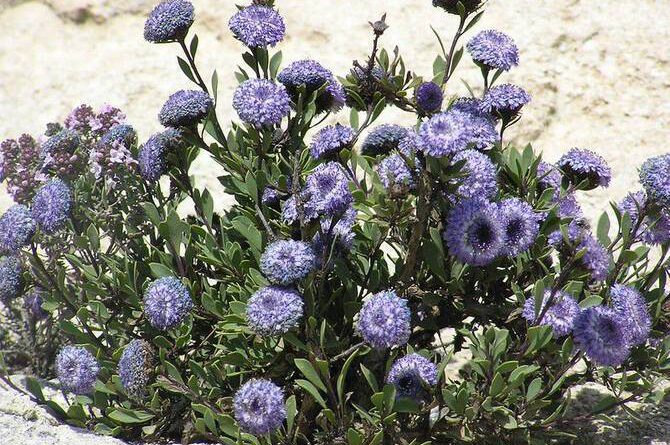Blue Daisy Blooms Again: Rediscovered Flower Becomes a Symbol of Saudi Arabia’s Natural Renewal
Tabuk – The rediscovery of a delicate blue-flowered shrub in the Kingdom’s northwest has sparked renewed hope for biodiversity, conservation, and the harmony between nature and science.
In the heart of Saudi Arabia’s northwestern mountains, a rare flower has reemerged after decades of disappearance. The sighting of Globularia alypum, known locally as “Zuraiqa” or “Aynon Kuhli,” has reignited national pride and ecological optimism.
Once widespread, this delicate blue daisy had vanished due to overgrazing and land degradation. Its return marks not just a scientific milestone but also a celebration of Saudi Arabia’s ongoing environmental revival.
Environmental consultant Oubaid Alouni, a former adviser at the National Vegetation Center, described the discovery as deeply symbolic.
“The primary cause of its scarcity is overgrazing, as it is an excellent grazing species,” he said. “The second cause is land degradation. The third cause is a history of neglect.”
Belonging to the Plantaginaceae family, Globularia alypum is native to the Mediterranean basin. It thrives in North Africa, southern Europe, and parts of Southwest Asia — including Saudi Arabia’s mountainous regions.
Alouni noted that the plant’s survival is tied to its resilience and adaptability. “Camels heavily graze it, so it is more commonly found in mountainous or calcareous regions where it is naturally protected,” he said.
He praised ongoing national initiatives that focus on restoring native vegetation and protecting endangered species. Saudi Arabia’s environmental centers are investing in reforestation, habitat restoration, and seed preservation programs.
To ensure Globularia alypum’s survival, Alouni recommends replanting it in its natural northwestern habitats. He also advocates for public education and the cultivation of this plant in home gardens to raise awareness of its ecological and medicinal importance.
Standing between 30 and 80 centimeters tall, the shrub forms dense, woody bushes with evergreen leaves. Its spherical clusters of soft blue to violet blooms paint the winter landscape with beauty and life from October through June.
“The advantage of this shrub is that it can become an annual in very hot places,” Alouni explained. “The seeds fall into the soil, and if winter comes with mild weather and rains, it sprouts again.”
He described it poetically: “It is like a beautiful dress with its lovely navy-blue color and round shape.” For many, this flower symbolizes endurance — thriving quietly even under challenging environmental conditions.
Beyond its visual charm, Globularia alypum holds remarkable medicinal value rooted in traditional healing practices. It has been used for its anti-inflammatory, antioxidant, hepatoprotective, and antidiabetic effects across generations.
Scientific studies by national research centers confirm its health benefits. Extracts from the plant can help lower blood glucose levels and improve insulin sensitivity due to its rich polyphenolic compounds.
“It is useful as an anti-rheumatic, antidiabetic, and for intermittent fevers, in addition to its use as a laxative,” Alouni added. Its blend of beauty and biology makes it a perfect symbol of the bond between nature and medicine.
However, Alouni cautioned that more research and documentation are needed. Some specimens remain unrecorded due to their rarity and the limited number of botanical experts available.
He emphasized that maintaining accurate plant records is crucial for understanding biodiversity and shaping conservation policy. Every species documented contributes to preserving the Kingdom’s environmental knowledge and natural legacy.
The rediscovery of the blue daisy underscores the growing momentum behind Saudi Arabia’s ecological restoration. It highlights how traditional wisdom and modern science can unite to safeguard the nation’s natural treasures.
This humble flower, once forgotten, now stands as a living emblem of regeneration and hope. Its return to the wild reflects the country’s broader vision — to protect its environment, nurture biodiversity, and celebrate the beauty of its land.



